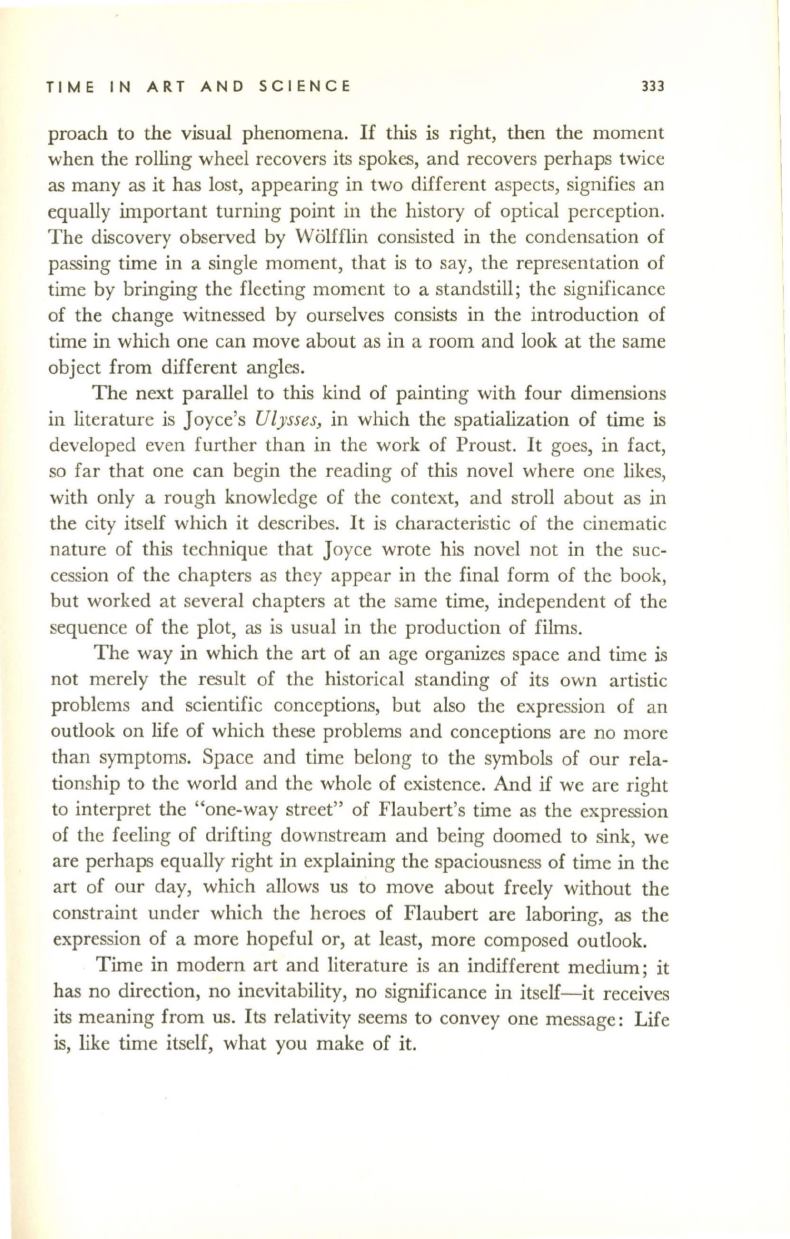
TIME IN ART AND SCIENCE
333
proach to the visual phenomena.
If
this is right, then the moment
when the rolling wheel recovers its spokes, and recovers perhaps twice
as many as it has lost, appearing in two different aspects, signifies an
equally important turning point in the history of optical perception.
The discovery observed by WCilfflin consisted in the condensation of
passing time in a single moment, that is to say, the representation of
time by bringing the fleeting moment to a standstill; the significance
of the change witnessed by ourselves consists in the introduction of
time
in
which one can move about as in a room and look at the same
object from different angles.
The next parallel to this kind of painting with four dimensions
in literature is Joyce's
Ulysses,
in which the spatialization of time is
developed even further than in the work of Proust. It goes,
in
fact,
so far that one can begin the reading of this novel where one likes,
with only a rough knowledge of the context, and stroll about as in
the city itself which it describes.
It
is characteristic of the cinematic
nature of this technique that Joyce wrote his novel not in the suc–
cession of the chapters as they appear in the final form of the book,
but worked at several chapters at the same time, independent of the
sequence of the plot, as is usual in the production of films.
The way in which the art of an age organizes space and time is
not merely the result of the historical standing of its own artistic
problems and scientific conceptions, but also the expression of an
outlook on life of which these problems and conceptions are no more
than symptoms. Space and time belong to the symbols of our rela–
tionship to the world and the whole of existence. And if we are right
to interpret the "one-way street" of Flaubert's time as the expression
of the feeling of drifting downstream and being doomed to sink, we
are perhaps equally right in explaining the spaciousness of time in the
art of our day, which allows us to move about freely without the
constraint under which the heroes of Flaubert are laboring, as the
expression of a more hopeful or, at least, more composed outlook.
Time in modern art and literature is an indifferent medium; it
has no direction, no inevitability, no significance in itself-it receives
its meaning from us. Its relativity seems to convey one message: Life
is,
like time itself, what you make of it.


